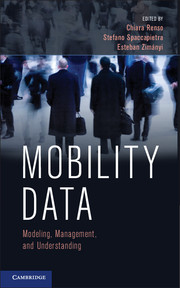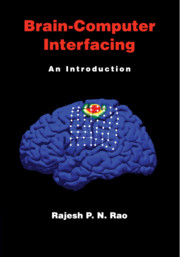Refine listing
Actions for selected content:
1372 results in Ebooks on robotics
17 - Conclusions
- from PART IV - FUTURE CHALLENGES AND CONCLUSIONS
-
-
- Book:
- Mobility Data
- Published online:
- 05 October 2013
- Print publication:
- 14 October 2013, pp 334-340
-
- Chapter
- Export citation
Author Index
-
- Book:
- Mobility Data
- Published online:
- 05 October 2013
- Print publication:
- 14 October 2013, pp 357-357
-
- Chapter
- Export citation
6 - Mobility Data Mining
- from PART II - MOBILITY DATA UNDERSTANDING
-
-
- Book:
- Mobility Data
- Published online:
- 05 October 2013
- Print publication:
- 14 October 2013, pp 105-126
-
- Chapter
- Export citation
Plate section
-
- Book:
- Mobility Data
- Published online:
- 05 October 2013
- Print publication:
- 14 October 2013, pp -
-
- Chapter
- Export citation
3 - Trajectory Databases
- from PART I - MOBILITY DATA MODELING AND REPRESENTATION
-
-
- Book:
- Mobility Data
- Published online:
- 05 October 2013
- Print publication:
- 14 October 2013, pp 42-61
-
- Chapter
- Export citation
Contents
-
- Book:
- Mobility Data
- Published online:
- 05 October 2013
- Print publication:
- 14 October 2013, pp v-x
-
- Chapter
- Export citation

Mobility Data
- Modeling, Management, and Understanding
-
- Published online:
- 05 October 2013
- Print publication:
- 14 October 2013

Brain-Computer Interfacing
- An Introduction
-
- Published online:
- 05 October 2013
- Print publication:
- 30 September 2013
12 - Applications of BCIs
- from Part IV - Applications and Ethics
-
- Book:
- Brain-Computer Interfacing
- Published online:
- 05 October 2013
- Print publication:
- 30 September 2013, pp 239-271
-
- Chapter
- Export citation
4 - Signal Processing
- from Part I - Background
-
- Book:
- Brain-Computer Interfacing
- Published online:
- 05 October 2013
- Print publication:
- 30 September 2013, pp 39-70
-
- Chapter
- Export citation
1 - Introduction
-
- Book:
- Brain-Computer Interfacing
- Published online:
- 05 October 2013
- Print publication:
- 30 September 2013, pp 1-4
-
- Chapter
-
- You have access
- Export citation
10 - BCIs that Stimulate
- from Part III - Major Types of BCIs
-
- Book:
- Brain-Computer Interfacing
- Published online:
- 05 October 2013
- Print publication:
- 30 September 2013, pp 210-220
-
- Chapter
- Export citation
9 - Noninvasive BCIs
- from Part III - Major Types of BCIs
-
- Book:
- Brain-Computer Interfacing
- Published online:
- 05 October 2013
- Print publication:
- 30 September 2013, pp 177-209
-
- Chapter
- Export citation
Preface
-
- Book:
- Brain-Computer Interfacing
- Published online:
- 05 October 2013
- Print publication:
- 30 September 2013, pp xiii-xvi
-
- Chapter
- Export citation
Appendix - Mathematical Background
-
- Book:
- Brain-Computer Interfacing
- Published online:
- 05 October 2013
- Print publication:
- 30 September 2013, pp 281-294
-
- Chapter
- Export citation
13 - Ethics of Brain-Computer Interfacing
- from Part IV - Applications and Ethics
-
- Book:
- Brain-Computer Interfacing
- Published online:
- 05 October 2013
- Print publication:
- 30 September 2013, pp 272-278
-
- Chapter
- Export citation
Part IV - Applications and Ethics
-
- Book:
- Brain-Computer Interfacing
- Published online:
- 05 October 2013
- Print publication:
- 30 September 2013, pp 237-238
-
- Chapter
- Export citation
Index
-
- Book:
- Brain-Computer Interfacing
- Published online:
- 05 October 2013
- Print publication:
- 30 September 2013, pp 307-319
-
- Chapter
- Export citation
Dedication
-
- Book:
- Brain-Computer Interfacing
- Published online:
- 05 October 2013
- Print publication:
- 30 September 2013, pp v-vi
-
- Chapter
- Export citation
2 - Basic Neuroscience
- from Part I - Background
-
- Book:
- Brain-Computer Interfacing
- Published online:
- 05 October 2013
- Print publication:
- 30 September 2013, pp 7-17
-
- Chapter
- Export citation
